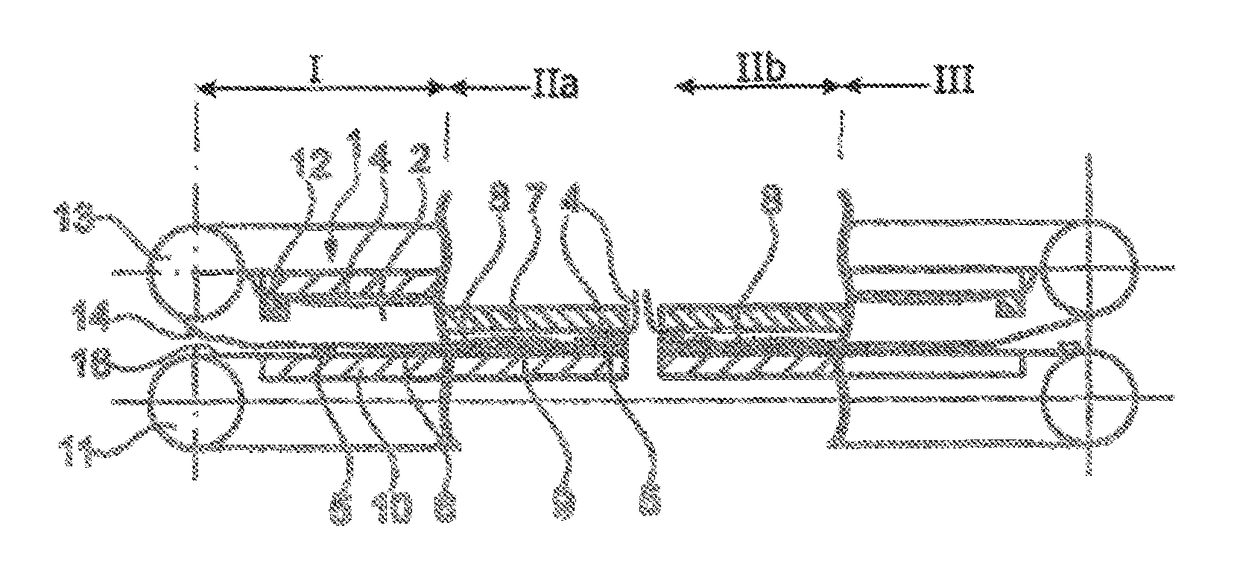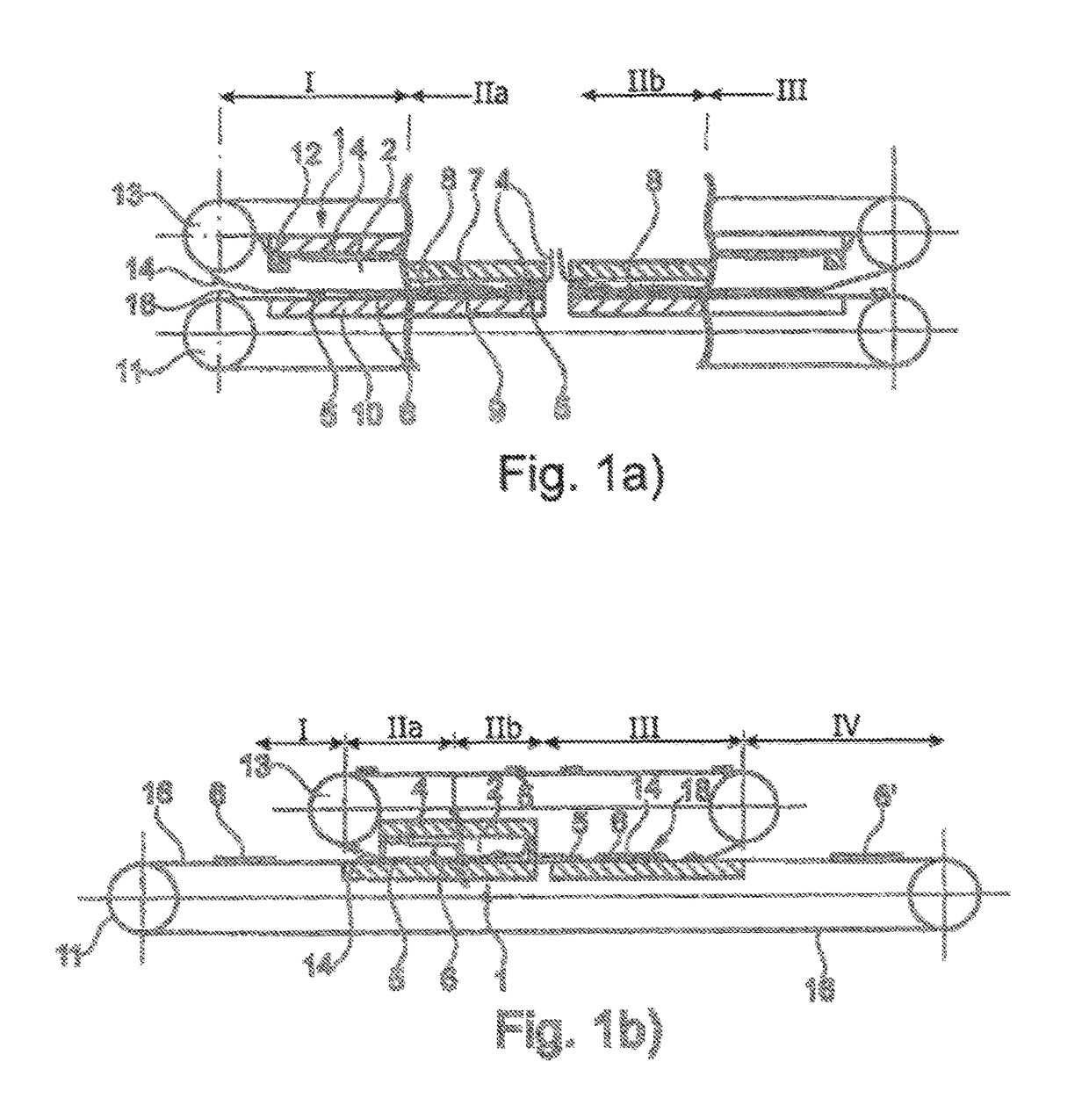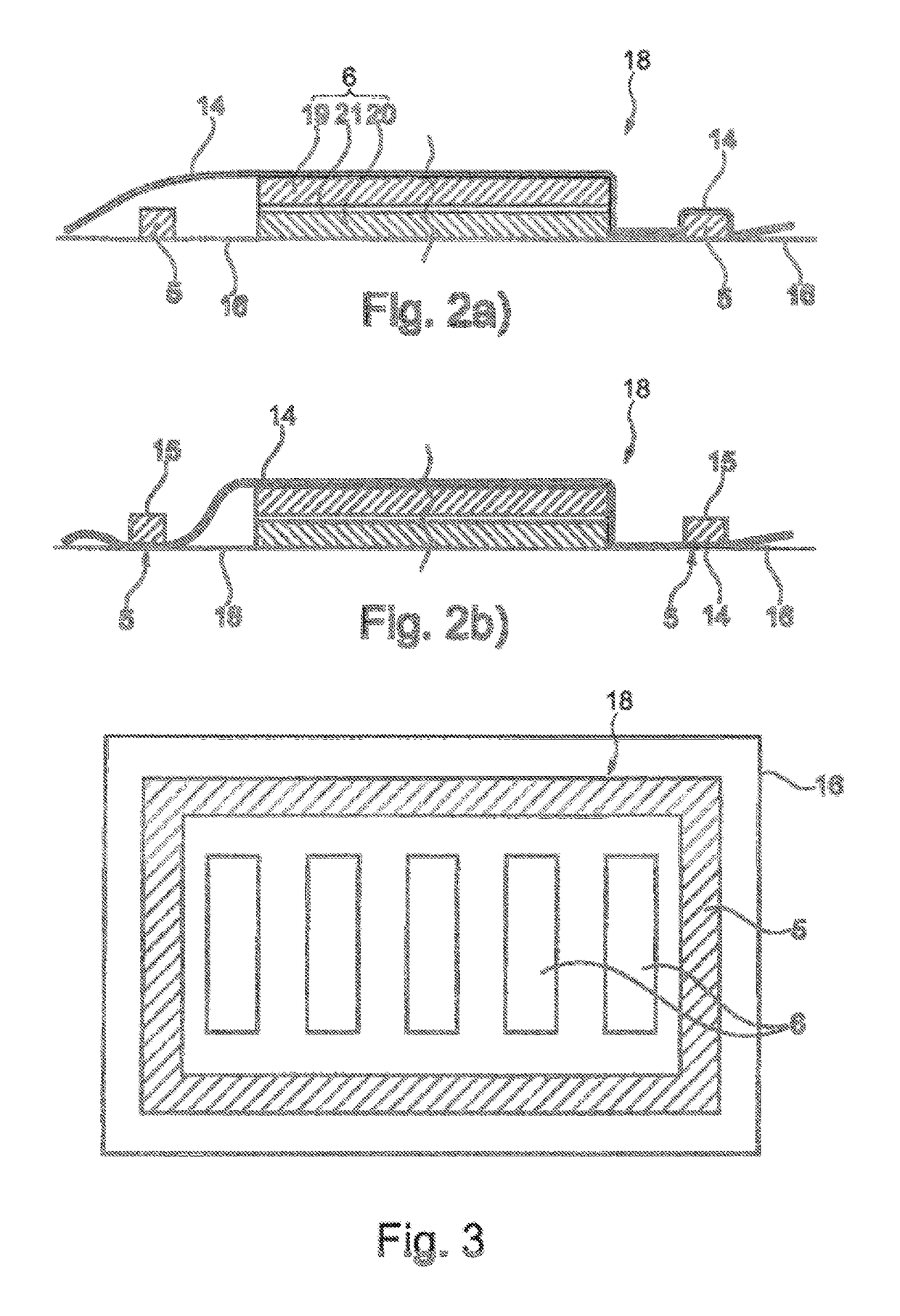Device and method for producing composite sheets while forming a vacuum bag
a vacuum bag and composite glass technology, applied in the direction of photovoltaic energy generation, electrical equipment, lamination, etc., can solve the problems of vacuum bag damage during repacking, inability to repack and pack composite glasses, and inability to achieve continuous production flow, so as to reduce the overall cycle length and prevent excessive drying
- Summary
- Abstract
- Description
- Claims
- Application Information
AI Technical Summary
Benefits of technology
Problems solved by technology
Method used
Image
Examples
Embodiment Construction
[0005]It is therefore the object of the present invention to provide a device and a method for producing composite sheets wherein the composite sheets can be produced by the continuous process (in a line) and, moreover, wider control possibilities are made possible during production, in particular the control and monitoring of previously non-controllable production parameters. This type of device is defined in claim 1, while a corresponding method is the subject matter of claim 10. The re-usable vacuum bag according to the invention is the subject matter of claim 16.
[0006]A device according to the invention for producing composite sheets, in particular composite glass plates, comprises an evacuating device, a vacuum-tight transporting surface for conveying the sheets to be laminated into the evacuating device and for conveying the sheets out of the evacuating device, and a vacuum-tight release sheet that is transported along with the transporting surface, the sheets to be laminated ...
PUM
| Property | Measurement | Unit |
|---|---|---|
| vacuum | aaaaa | aaaaa |
| weight | aaaaa | aaaaa |
| vacuum-tight transporting | aaaaa | aaaaa |
Abstract
Description
Claims
Application Information
 Login to View More
Login to View More - R&D
- Intellectual Property
- Life Sciences
- Materials
- Tech Scout
- Unparalleled Data Quality
- Higher Quality Content
- 60% Fewer Hallucinations
Browse by: Latest US Patents, China's latest patents, Technical Efficacy Thesaurus, Application Domain, Technology Topic, Popular Technical Reports.
© 2025 PatSnap. All rights reserved.Legal|Privacy policy|Modern Slavery Act Transparency Statement|Sitemap|About US| Contact US: help@patsnap.com



